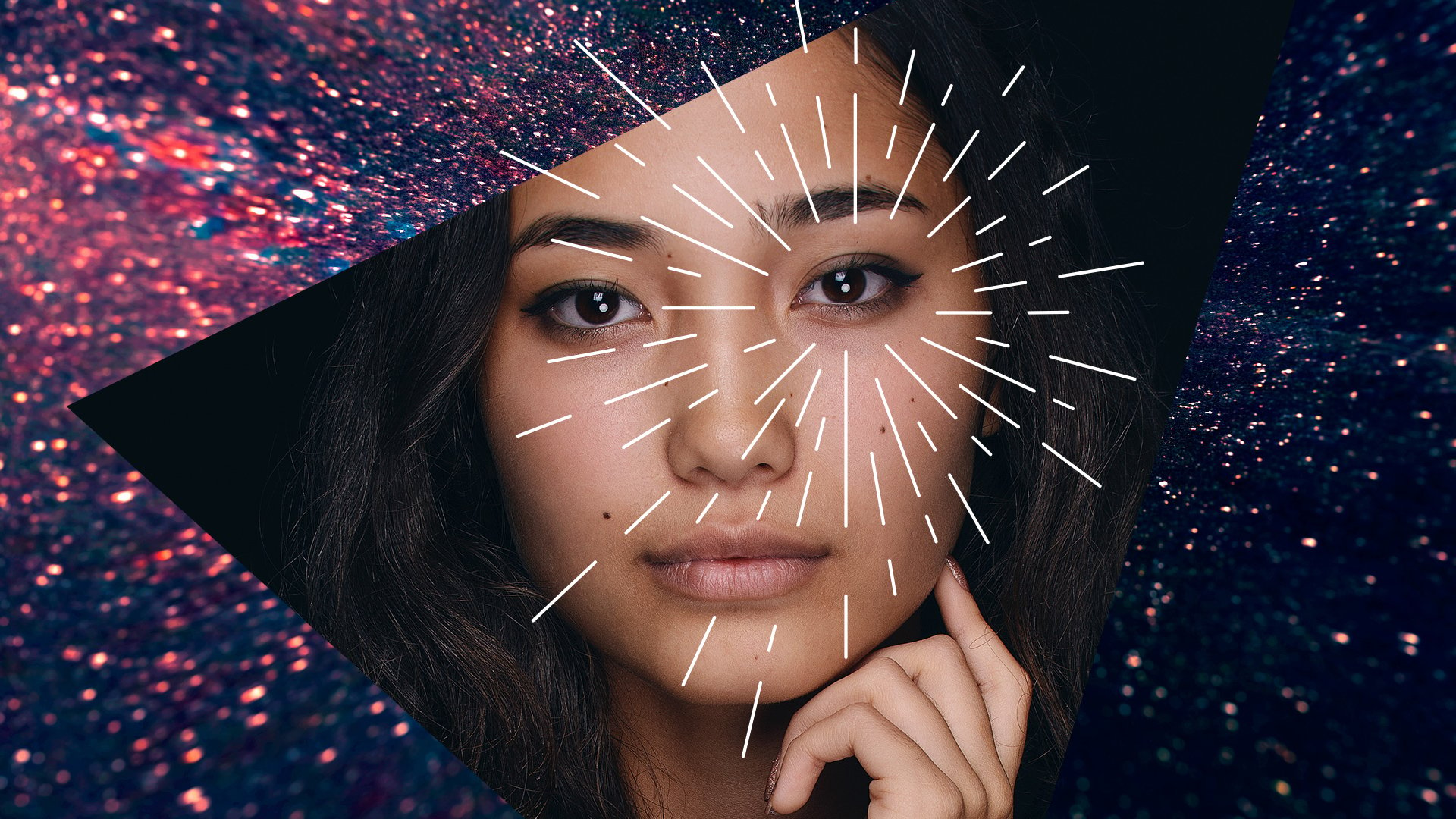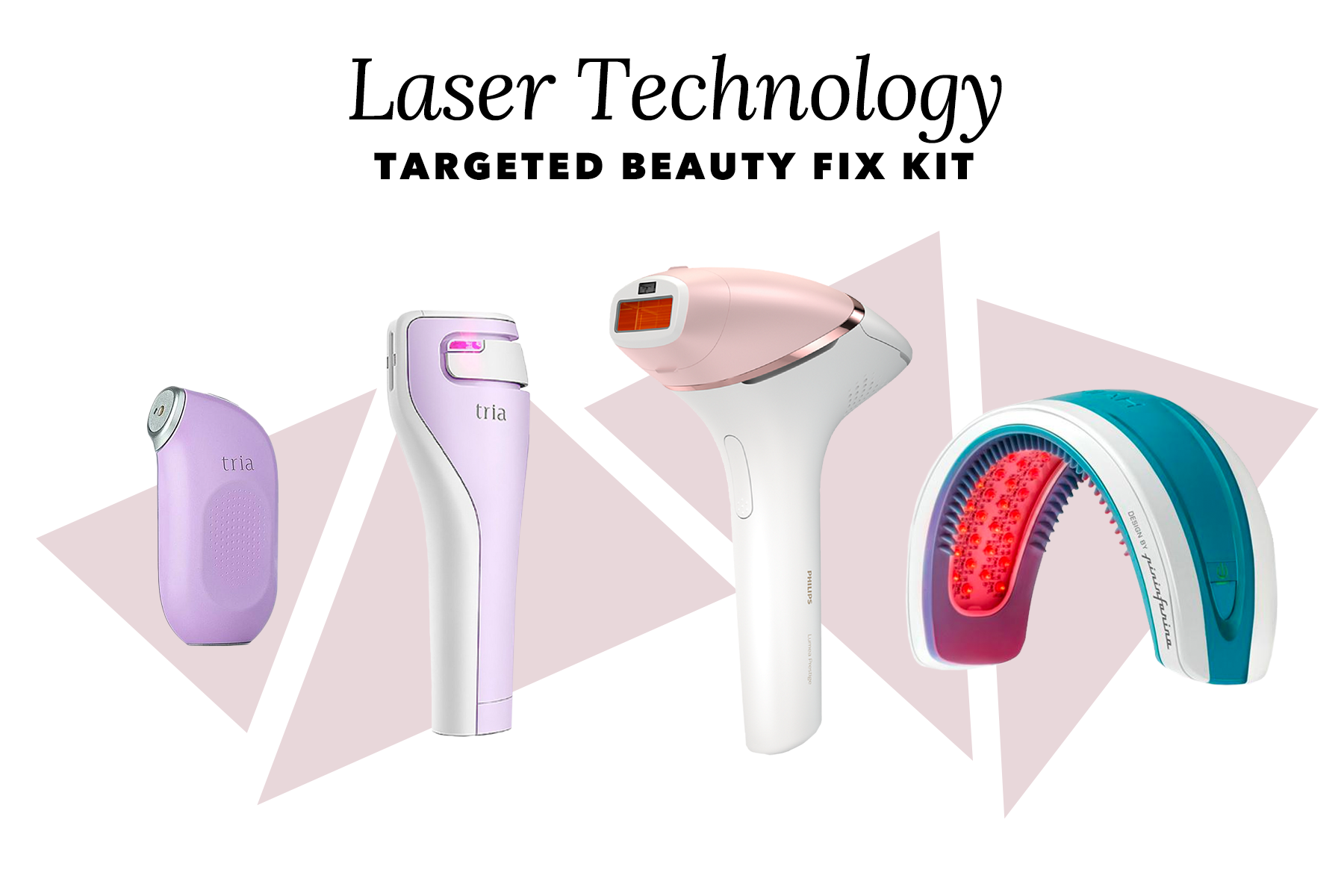For most of us, beauty concerns tend to escalate as we age. Maybe it’s dull skin after a particularly dry winter, sun damage from those trips to Phuket, deepening expression lines or lingering acne scars.
As skincare treatments continue to evolve, the latest tech-driven solutions can tackle just about any issue. That’s where laser therapy comes in. A powerful, targeted and versatile light-based treatment, laser can be administered at home to tackle a range of superficial skin problems, from fine lines to acne scarring, hyperpigmentation, unwanted hair, hair loss, and more. Here is why we, at The Artistry, have chosen it as a favorite skincare treatment.
Why we chose it:
- One of the best technologies for targeted, surface-level skin concerns
- Effective for surgical lines, wrinkles, sun damage, scars, and pigmentation
- Commonly used for permanent hair removal
- Used to accelerate hair regrowth
- Treats birthmarks, spider veins, vascular lesions, uneven skin tone and texture
- Highly targeted and precise
- Fast and lasting results
How lasers work
An acronym for ‘light amplification by stimulated emission of radiation’, laser technology originated in the medical field. Doctors have long used lasers to reduce the size of tumors, remove vascular lesions and even improve eyesight.
In the beauty realm, lasers have been used to treat everything from scars to acne, wrinkles, sun damage, unwanted hair – the list goes on. The process is relatively simple: laser devices emit a single wavelength of light that's absorbed by select pigments in the skin. While all lasers follow this principle, the wavelength, pulse width and rate at which the beam of light is generated can vary widely from one treatment to the next. As a result, there are nearly a dozen different laser-fueled beauty technologies – all with distinct results.
In the case of hair removal, the laser targets melanin, the brown or dark pigment on hair and skin, and heats anything of that color, zapping pigment marks and hair follicles. On the opposite end of the spectrum, red light therapy (or cold laser therapy) irradiates photons into scalp tissues, encouraging follicles to grow hair. In addition, some lasers use a red color to combat acne scars. Others home in on water molecules, heating them to the point of triggering the skin into a healing phase where new collagen is produced, which in turns leads to the smoothing of fine lines (this process is known generally as skin resurfacing laser).
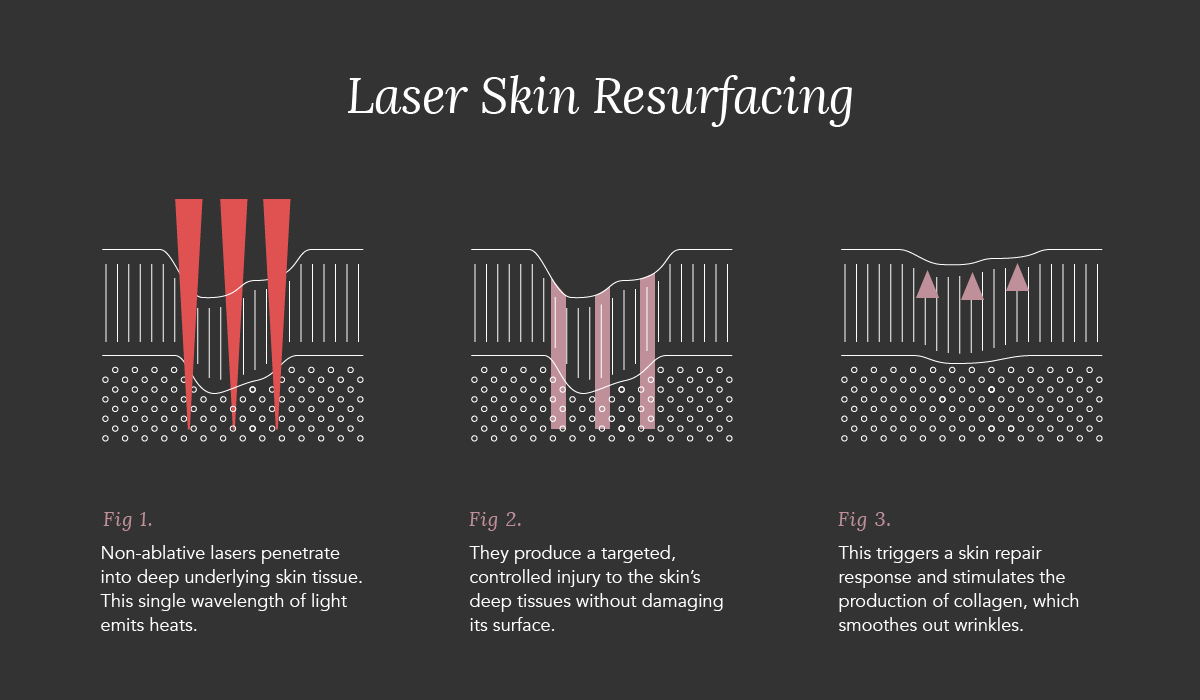
Related: Overall of all Anti-aging Beauty Treatments
Different elements, different results
The main variables in laser technology – energy type, width, frequency – are dictated by the elements used to generate the wavelengths of light. Depending on a laser’s elements the results will vary. Here are a few of the most common:
| Type | Purpose |
| Alexandrite | A greenish gemstone producing a red wavelength used to treat blood vessels, excess hair or remove tattoos |
| CO2 | A colourless, odorless gas that emits infrared light used for skin resurfacing |
| Erbium | A silvery-white solid metal that beams infrared light to resurface skin and treat scars. |
| Nd: YAG |
A crystal that creates infrared light used to reduce the appearance of blood vessels, brown pigment, excess hair or tattoos. |
| Pulsed Dye | Generates a yellow beam of light to target blood vessels, redness, and scars. |
| Picosecond | A process that allows a laser to produce very short pulses of high-intensity light beam for discolouration and tattoos. |
| Intense Pulsed Light (IPL) | Not strictly a laser treatment, as IPL has multiple wavelengths that scatter within the skin to target hair, hyperpigmentation, rosacea and sun damage |
Understanding Ablative vs Non-Ablative Lasers
Two words get thrown around a lot when it comes to laser technology: ablative and non-ablative. What’s the difference?
In a nutshell, ablative lasers remove the top layer of the skin by vaporizing it, inducing a controlled wound that immediately triggers the underlying skin and stimulates the production of new cells. Non-ablative lasers take a lighter approach, going deeper into the underlying tissue and leaving the outer skin layer untouched.
By definition, ablative treatments take longer to heal (three to 10 days) but less time to be effective. Sometimes, you can see results in just one session. Meanwhile, all at-home devices are noninvasive non-ablative lasers which means they require only a few hours to several days of downtime.
| Ablative Laser | Non-ablative Laser |
| Removes entire epidermis and portions of dermis | Epidermis not visibly disrupted |
| Improves skin roughness, fine periorificial lines, and dyspigmentation | Improves surface irregularities, skin texture, and wrinkles; some also address dyspigmentation, telangiectasia, and superficial erythema |
| Possible side effects: itching, erythema, edema, infection, scarring, hypo/ hyperpigmentation | Possible side effects: mild erythema and edema |
| Healing time: 2-4 weeks | Healing time: several minutes to a few hours |
| 1 treatment as needed every few years | 5-6 treatments every 3-4 weeks |
Frequently Asked Questions
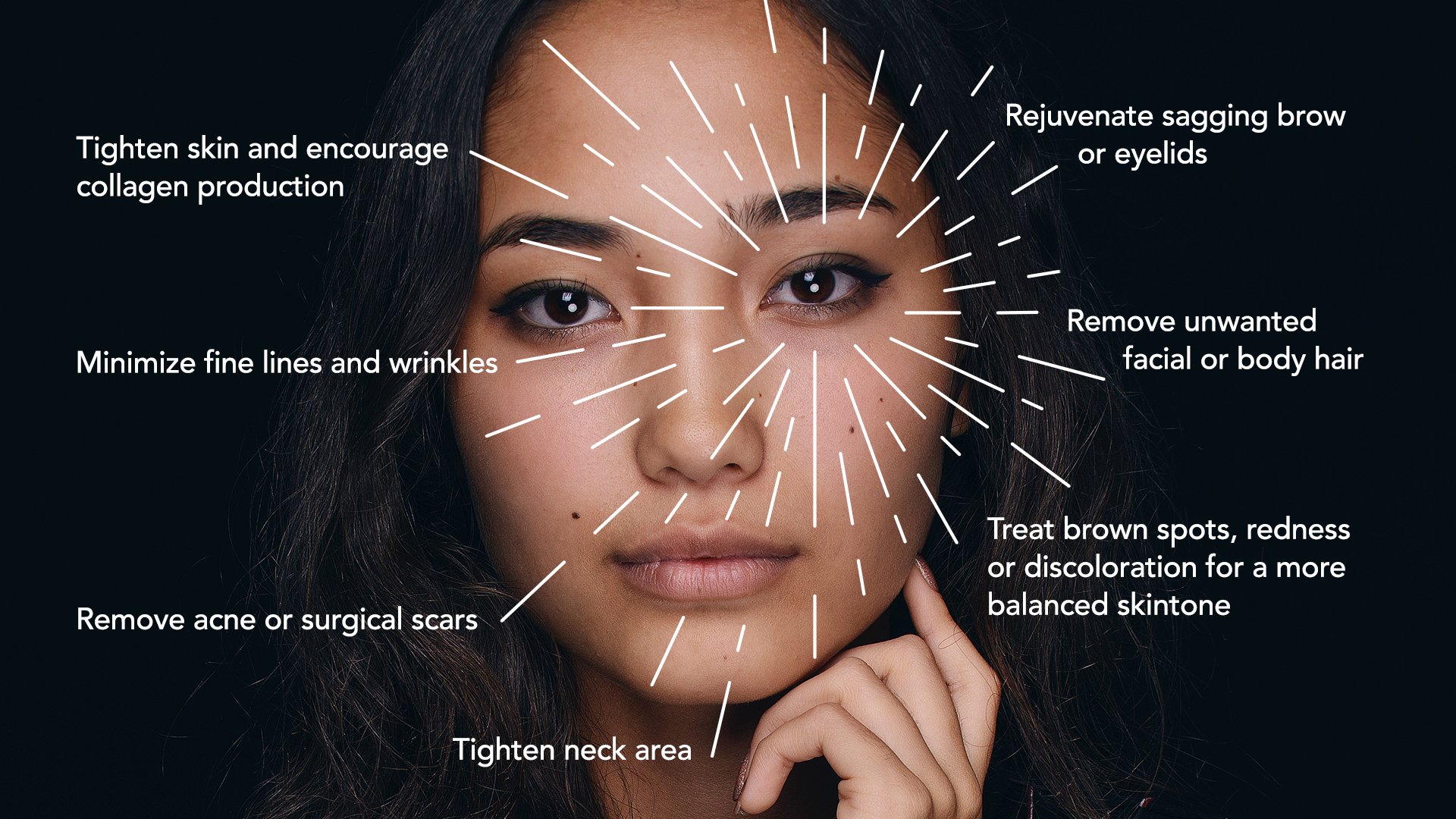
Who is it for? Laser technology can treat numerous skin issues, but it’s not a one-size-fits-all technology. It’s essential to consider which laser treatment is right for your skin concerns.
Does laser work on all skin tones? It depends on the treatment. For hair removal, those with high contrast – such as dark hair on light skin – will see best results. Some lasers can be dangerous for darker skin tones, due to risk of discolouration.
Does it hurt? At the salon, laser treatments can be uncomfortable and sometimes painful. Deep resurfacing laser might require the application of a numbing cream beforehand. Ablative lasers require a local anesthetic and, occasionally, sedation. However, at-home devices are generally much more tolerable, depending on the person’s pain tolerance.
What’s the downtime? It depends on the treatment. Ablative resurfacing lasers take at least a week of healing. Non-ablative lasers may heal in several hours to days. Most at-home devices are more gentle than clinical treatments, requiring little to no downtime.
Any risks? Hypopigmentation (skin lightening) or hyperpigmentation (darkening) can occur with pigment-pulverizing lasers, depending on your skin tone. Bruising can sometimes occur if you have particularly large red blood vessels. Redness, scarring and outbreaks – if your skin is prone – are possible side effects, too.
Do at-home devices work? Yes! At-home laser devices are safe, cost-effective, and can certainly lead to lasting results. They can also be used as a complement to clinical procedures as part of an effective maintenance regimen.
I keep reading about ‘Fraxel laser.’ What does it mean? Many articles use laser brand names – particularly Fraxel, an FDA-approved laser device – to describe the technology at large. That’s not strictly correct. Fraxel is just one type of methodology and does not reflect the breadth of laser treatments.
Are there factors I should be mindful of before a treatment? Yes. make sure you don't have extensive breakouts, open wounds, or infections on the areas where you wish to administer laser. Certain medications or conditions can also affect how the skin reacts to laser treatment.
What about the aftercare? Your skin will be sensitive to sun exposure and vulnerable to burns, so avoid sunlight and use a lotion with high SPF.
Where can I use it? Pretty much anywhere on the body, from the face and neck to the décolletage, stomach and thighs.
Laser vs other light-based therapies
Laser, IPL and LED are all light-based therapies, but they differ in terms of technology and results.
IPL: As a broad-spectrum light therapy, IPL (intense pulsed light) emits multiple wavelengths deep into the lower levels of skin, whereas laser emits a single light wave. While lasers are ideal for highly precise areas of skin or hair,IPL is better for treating wider sections of skin.
LED: Unlike IPL and laser,LED (light emitting diodes) does not heat skin cells to trigger cell turnover and collagen production. Instead, it produces low-energy yet deeply penetrating wavelengths that are extremely gentle and healing.
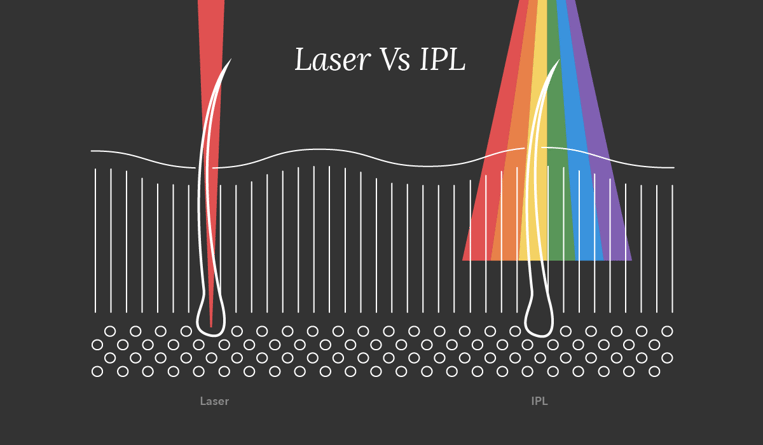
Laser vs HIFU and RF
Although effective in targeting surface-level issues, laser technology is best for superficially smoothing lines, removing hair, restoring hair growth, and treating pigmentation problems. When it comes to stimulating skin cells and collagen renewal, however, HIFU and RF are more effective because they can reach deeper into the epidermis. Furthermore, while HIFU and RF home-use devices are pretty much painless, some laser treatments can feel uncomfortable.
The/A's recommends:
Hair Growth: HairMax LaserBand 82 delivers therapeutic light energy directly to hair follicles through 82 medical-grade lasers. The device stimulates hair follicles, reverses hair thinning, and jump starts hair’s natural growth cycle.
Anti-aging: Tria SmoothBeauty Laser restores bright, supple skin and smooths wrinkles – even around the delicate eye area. The sleek device sends beams of light below the skin's surface to accelerate collagen and elastin production for visibly younger and more radiant looking skin.
Hair Removal: Ideal for both the face and body, Philips Lumea Prestige IPL Hair Removal Device targets unwanted hair with gentle pulses of light. When applied regularly, this cordless device can remove hair permanently or semi-permanently.
.png?width=180&height=80&name=imgpsh_fullsize_anim%20(1).png)
